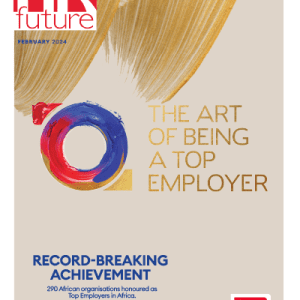Efficient workforce management is a critical component of organizational success. Whether overseeing recruitment, addressing compliance requirements, or ensuring employee satisfaction, those responsible for talent and workplace policies must remain adaptable and strategic. Developing strong leadership skills and a deep understanding of employee management trends can significantly enhance efficiency and outcomes.
Here’s how you can foster continuous improvement and drive organizational goals:
Understand the Core Workforce Responsibilities
A strong foundation begins with a clear understanding of workforce management’s primary responsibilities. These include recruitment, payroll, employee relations, compliance, and professional development. Leaders must identify which processes are central to their organization’s success and prioritize them accordingly. This approach eliminates redundancies and aligns team efforts with broader organizational objectives.
Breaking down each function into manageable steps helps create a more focused and productive work environment. For example, ensuring employee satisfaction through transparent policies and recognizing accomplishments promotes collaboration and retention.
Adopt Technology Solutions for Efficiency
Integrating technology can transform how teams operate, saving time and improving accuracy. Tools like applicant tracking systems (ATS), performance evaluation platforms, and payroll management software help reduce manual effort and ensure consistency. These solutions simplify workflows, making them faster and more accurate.
When choosing platforms, focus on scalability and user-friendliness. This approach ensures that your tools evolve alongside the organization, meeting future requirements without the need for constant system changes. By embracing the right technologies, leadership can concentrate on strategy and employee satisfaction rather than manual administrative tasks.
Hire the Right Professionals
Selecting well-qualified professionals to join your workforce team is essential for optimizing processes and supporting growth. Leaders equipped with advanced credentials, like an online MBA in HR, bring critical insights and expertise to improve hiring strategies, workforce satisfaction, and compliance measures. These programs emphasize leadership, strategic planning, communication, and analytical skills, enabling teams to tackle complex challenges effectively.
Flexibility is a key advantage for those pursuing advanced degrees in this field. Online programs cater to working professionals, offering the ability to enhance their knowledge while maintaining their current roles. Courses often focus on workforce analytics, organizational strategy, and the legal considerations crucial for creating cohesive policies. Employers benefit from hiring such professionals, as their skills lead to better alignment between workforce objectives and organizational goals.
Prioritize Legal and Ethical Compliance
Compliance with employment regulations and ethical guidelines is a cornerstone of effective workforce management. Adhering to rules governing wages, discrimination, and safety avoids legal complications and builds a culture of trust within the organization. Frequent reviews of policies and practices are essential to keeping them current with ever-changing laws.
Using compliance-focused tools, such as policy management software or audit tracking systems, simplifies these processes. These tools reduce risks and foster a culture of accountability. Regular training for employees and leadership on legal requirements ensures that the entire team remains informed and committed to ethical practices.
Foster a Collaborative Workplace Environment
Creating an environment where employees feel heard and valued is a powerful way to improve performance and retention. Open communication channels, recognition initiatives, and opportunities for professional development play a significant role in achieving this. For example, regular check-ins and feedback sessions demonstrate a commitment to individual growth and collective progress.
Investing in leadership training helps managers adopt approaches that nurture collaboration and transparency. When employees understand how their efforts contribute to overall goals, they are more likely to remain engaged and motivated, ultimately improving organizational success.
Develop Transparent Communication Strategies
Effective communication is the foundation of a productive workplace. Transparent communication strategies help bridge gaps between departments and ensure employees remain informed and aligned with organizational objectives. Clear messaging promotes trust, reduces misunderstandings, and fosters collaboration.
To improve communication, consider adopting tools like project management platforms or internal communication software that centralize updates and facilitate real-time collaboration. Regularly scheduled team meetings, newsletters, and feedback sessions can also help create a culture of openness. Engagement and morale improve significantly when employees feel they are part of the decision-making process.
Standardize Policies and Procedures
Consistent policies and procedures ensure fairness and clarity for all employees. These include guidelines on workplace behavior, leave policies and performance reviews. Standardization reduces confusion and prevents potential disputes, helping employees understand expectations and processes.
Create an accessible employee handbook outlining all essential policies and make updates as needed to reflect legal or organizational changes. Training sessions for new hires and regular refresher courses for existing employees can reinforce these standards. Clarity and consistency in policies help employees feel secure, leading to a more harmonious and productive work environment.
Use Data-Driven Insights for Decision-Making
Data analytics has become an essential tool for improving organizational strategies. By analyzing metrics like turnover rates, employee satisfaction scores, and productivity levels, teams can identify trends and address improvement areas. This data-driven approach empowers organizations to make informed decisions that align with long-term objectives.
Investing in workforce analytics software allows teams to track and evaluate real-time performance. Reviewing this data and applying insights helps optimize hiring, training, and retention efforts. Data-driven decision-making ensures that strategies are not based on assumptions but on measurable outcomes.
Streamlining workforce operations is an ongoing process that demands attention to detail, strategic planning, and a commitment to growth. By focusing on clear communication, standardized policies, and leveraging technology, organizations can create a productive and engaged workforce. Investing in advanced education equips professionals with the skills needed to optimize processes and lead effectively.
Creating a culture of continuous improvement ensures that processes remain efficient, employees feel valued, and the organization stays competitive. By implementing these strategies, organizations can achieve operational excellence and long-term success.
Guest writer


























